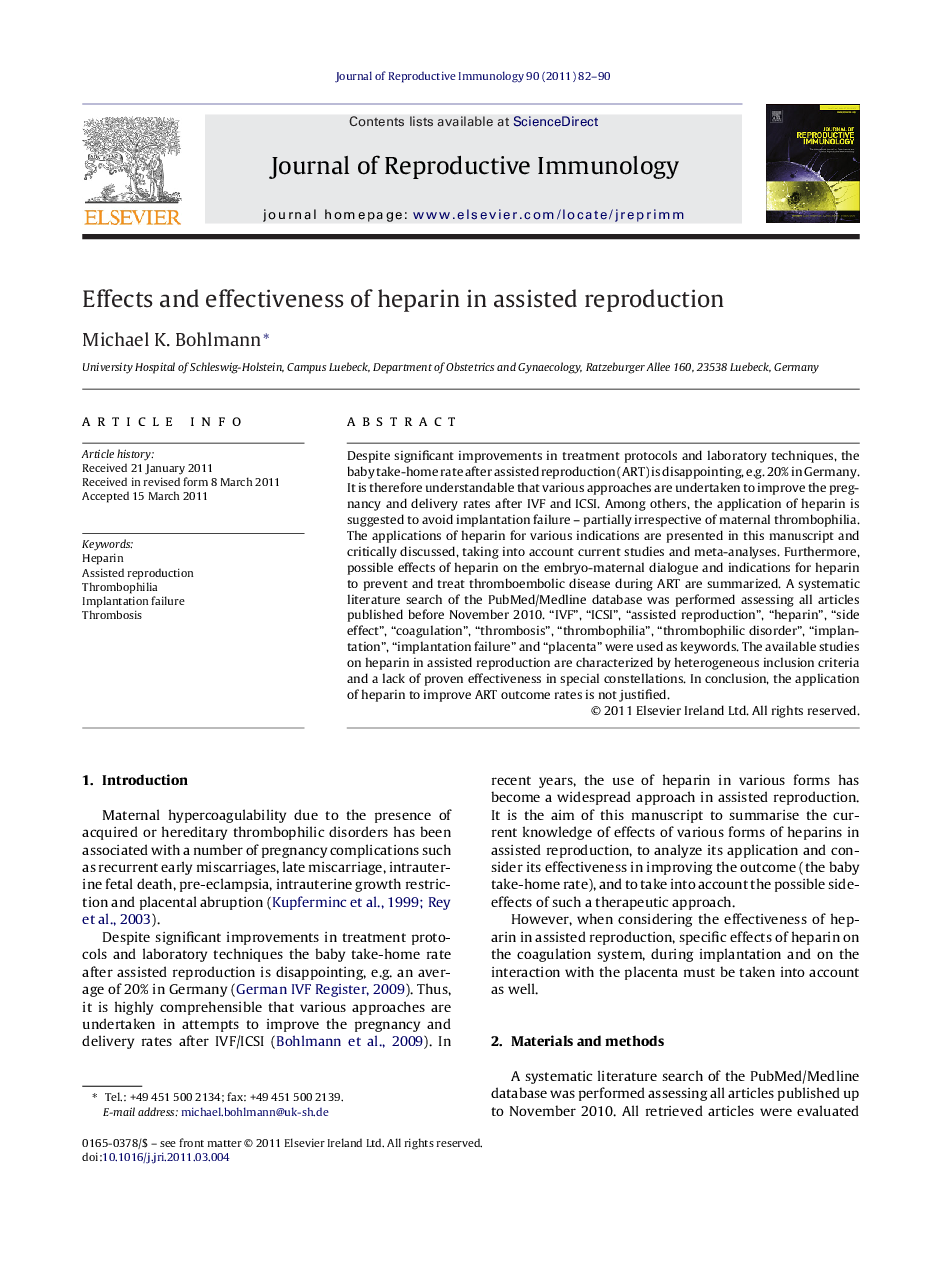| کد مقاله | کد نشریه | سال انتشار | مقاله انگلیسی | نسخه تمام متن |
|---|---|---|---|---|
| 3964440 | 1255825 | 2011 | 9 صفحه PDF | دانلود رایگان |

Despite significant improvements in treatment protocols and laboratory techniques, the baby take-home rate after assisted reproduction (ART) is disappointing, e.g. 20% in Germany. It is therefore understandable that various approaches are undertaken to improve the pregnancy and delivery rates after IVF and ICSI. Among others, the application of heparin is suggested to avoid implantation failure – partially irrespective of maternal thrombophilia. The applications of heparin for various indications are presented in this manuscript and critically discussed, taking into account current studies and meta-analyses. Furthermore, possible effects of heparin on the embryo-maternal dialogue and indications for heparin to prevent and treat thromboembolic disease during ART are summarized. A systematic literature search of the PubMed/Medline database was performed assessing all articles published before November 2010. “IVF”, “ICSI”, “assisted reproduction”, “heparin”, “side effect”, “coagulation”, “thrombosis”, “thrombophilia”, “thrombophilic disorder”, “implantation”, “implantation failure” and “placenta” were used as keywords. The available studies on heparin in assisted reproduction are characterized by heterogeneous inclusion criteria and a lack of proven effectiveness in special constellations. In conclusion, the application of heparin to improve ART outcome rates is not justified.
Journal: Journal of Reproductive Immunology - Volume 90, Issue 1, June 2011, Pages 82–90